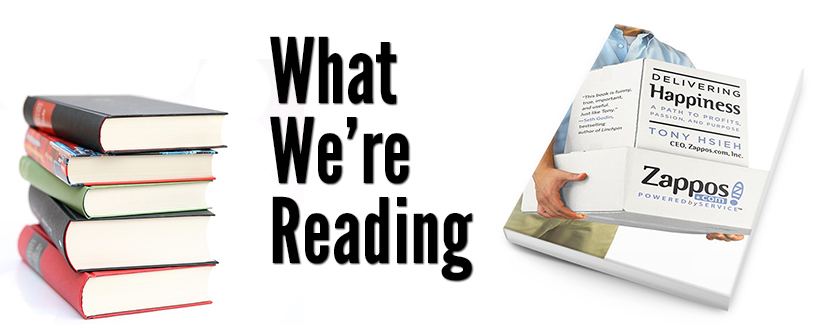
If someone offered you $2,000 to quit a new job, would you do it? That’s just one of the unconventional strategies Tony Hsieh describes in Delivering Happiness: A Path to Profits, Passion, and Purpose. He used these strategies to build his company, Zappos, into a powerhouse that earned over $1 billion in gross sales in less than a decade.
How did he do it?
First, he focused on building a positive and unique corporate culture. If you and your team members don’t have the right balance of passion and purpose, Hsieh believes it’s going to be hard to inspire them to work harder and create customer loyalty. That's what drives profits over the long haul.
Is he right?
Let’s take a look.
The Foundation: Learning from Poker
I was intrigued by poker because in poker you are playing against other players, not against the casino.
The book begins with details of Hsieh’s entrepreneurial journey, from worm farms to college poker. The section on poker draws strong parallels with the business world. Here are a few highlights:
- Evaluating market opportunities: If there are too many competitors (some irrational or inexperienced), even if you’re the best, it’s a lot harder to win.
- Marketing and branding: Act weak when strong, act strong when weak. Know when to bluff.
- Strategy: Differentiate yourself: Do the opposite of what the rest of the table is doing.
- Culture: Have fun. The game is a lot more enjoyable when you’re trying to do more than just make money.
The Means to the End: Inspiring Loyalty
Together, we had built a business that combined profits, passion, and purpose. And we knew that it wasn’t just about building a business. It was about building a lifestyle that was about delivering happiness to everyone, including ourselves.
Zappos wasn’t Hsieh’s first business endeavor — far from it. In addition to numerous childhood ventures, he started an online ad agency called LinkExchange. In 1999, he sold it to Microsoft for $265 million. Hsieh used part of that money to invest in Zappos before joining the company as its CEO.
That’s when the magic started to happen.
As a hands-on CEO, Hsieh took everything he’d learned from his childhood businesses (paper delivery, worm farms, and more!) and applied it to the shoe business. Early on, he decided that building a strong team was essential to creating a great customer experience. The first step in building that team is finding people who share your passion. That’s why every new employee is offered $2,000 to quit. If they take the money and run, they clearly didn’t share the brand passion that would have made them a good fit for Zappos.
Hsieh takes periodic employee surveys to see if employees are still happy; he also asks if they still agree that Zappos has a higher purpose than selling shoes. That higher purpose is a key part of job satisfaction. Few people wake up in the morning and dream of selling shoes online, but quite a few people might wake up wanting to build the best customer experience possible.
In addition to providing a higher purpose, Hsieh strives to make the Zappos workplace downright fun. In the building, there’s a popcorn machine, a nap room, and a library. Hsieh encourages his team members to read books for fun and personal growth.
Of course, Hsieh didn’t hit on “delivering happiness” as a company motto right away. That was actually the fifth iteration of their mission statement, after “largest selection of shoes,” “customer service,” “culture and core values as our platform,” and “personal emotional connection.” There’s a good lesson in that evolution, as well as in the fact that the company wasn’t an overnight success. It almost went out of business five different times in 10 years. You aren’t expected to come up with a perfect goal and mission statement right away. You may need time to pinpoint your niche and best identify how to serve that niche.
The End Goal: Delivering Happiness
In business, one of the most important decisions for an entrepreneur or a CEO to make is what business to be in. It doesn’t matter how flawlessly a business is executed if it’s the wrong business or if it’s in too small a market.
Once Hsieh focused on a goal, how did he help Zappos achieve it?
To start with, Zappos customer service representatives don’t use a script or a call timer. They don’t try to upsell you. As long as they’re helping you and making you happy, they can stay on the line as long as necessary.
The company philosophy extends past contact with its employees. Everything Zappos does is designed to make the customer happy, from shopping to shipping to returns. Even their boxes say “Delivering Happiness.” This end goal circles back to the philosophy of choosing team members who believe in the medium and the message. One is only possible because of the other.
So what’s the lesson we can take from this? If you’re a one-man shop, take the time to remember why you got into this business in the first place. What do you love about it? What brings you fulfillment? Now capture that and share it with your clients and prospects.
If you run an agency or have a team helping you, take employee surveys like Hsieh did. Find out if your team’s personal goals and your goals are aligned. If not, maybe they need to hear more from you about the good work they're doing. Let your passion and drive inspire them. Then give them the motivation to be the best at helping your clients protect their loved ones with life insurance.
Find out more about what it takes to become a 21st Century Producer in our free eBook:

